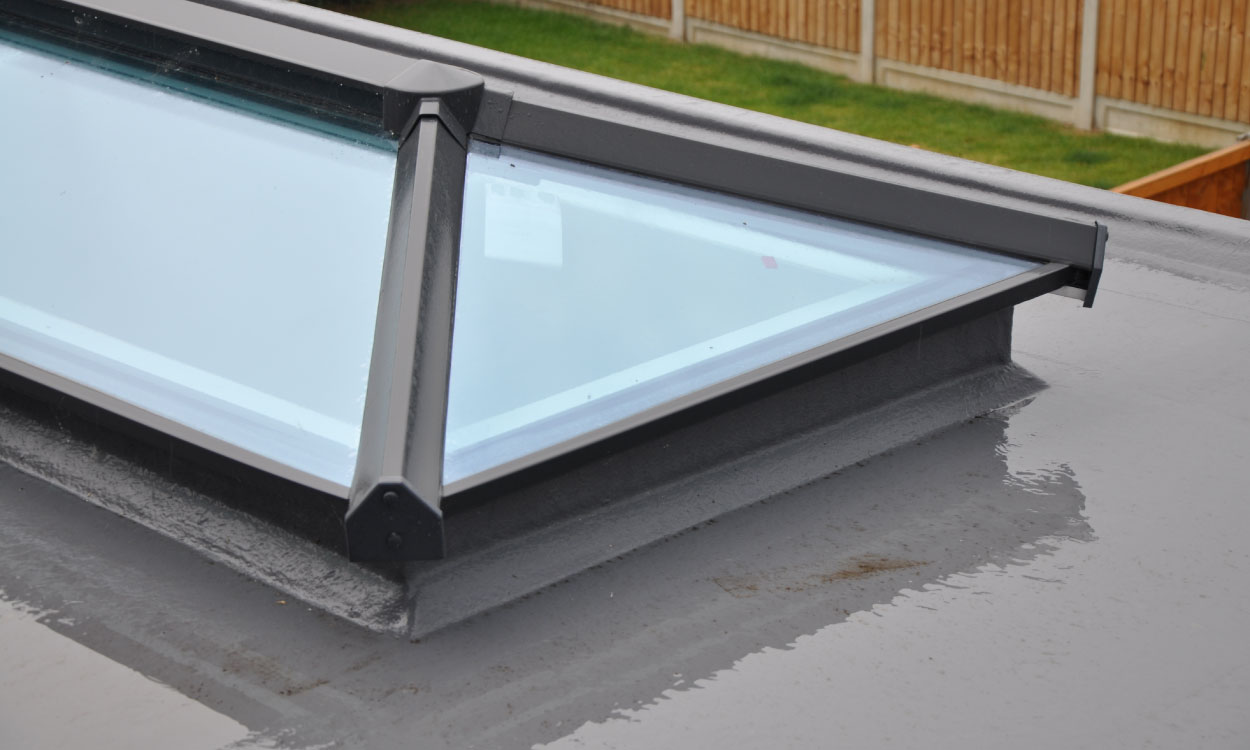Energy efficiency in flat roof systems plays a crucial role in meeting the UK Government’s Energy Performance Certificate (EPC) targets. By implementing strategic measures, flat roofs can enhance a building’s energy efficiency.
The UK has a goal to achieve an EPC rating of C for a majority of homes by 2035, while aiming for commercial buildings to achieve an EPC rating of B by 2030.
Inefficient insulation within a roof can result in a heat loss of up to 25%, thereby exerting a detrimental effect on both energy efficiency and escalating fuel bills.
To address this issue and contribute to the goal of achieving higher EPC ratings, the use of single-ply membrane is considered a promising solution. Single-ply membranes, renowned for their insulation properties, can significantly enhance the energy efficiency of flat roof systems.

How Can Heat Be Lost In Flat Roof Systems?
Heat can be lost in flat roof systems due to the following reasons:
Lack of insulation or improper installation: If the roof is not properly insulated, or if the insulation is not installed correctly, heat can easily escape through the roof.
Using low-quality products without the appropriate waterproof tests: Using low-quality products can lead to leaks and gaps in the roof, which can also allow heat to escape.
Not having a vapour control layer (VCL) fitted: A VCL is a layer of material that helps to prevent moisture from entering the roof and causing damage. If a VCL is not installed, moisture can build up in the roof, which can lead to mould and mildew growth and can also cause the roof to deteriorate more quickly.
What Is The Four-step Approach To Improving Efficiency?
To boost energy savings and roof efficiency, follow this four-step approach:
Seek expert roofing advice: Get a complete roof survey to identify issues and ensure the correct specification is met.
Insulate properly: Determine the right type, amount, location, and installation method for insulation.
Ensure proper waterproofing: Use the correct waterproofing system to prevent gaps and water collection.
Perform regular maintenance: Clear gutters and valleys to ensure proper drainage and prolong roof lifespan.
How Can Single Ply Membrane Be Used To Improve Energy Efficiency?
What Is A Single Ply Membrane?
A single ply membrane is a roofing material specifically designed for waterproofing flat or nearly flat roofs. Materials such as Thermoplastic Olefin (TPO), Polyvinyl Chloride (PVC), and Ethylene Propylene Diene Monomer (EPDM).
They are installed in large, continuous sheets to minimise the number of seams or joints, which are potential weak points for water leakage. Single ply membranes are durable, resistant to UV radiation, chemicals, and ozone, and require minimal maintenance.
How Can Single Ply Membrane Be Used:
Single-ply membranes can be used to improve energy efficiency in three main ways:
Reflect sunlight and heat: Some single-ply membranes, particularly white or light-coloured ones, are designed to reflect sunlight and heat, reducing the amount of heat absorbed by the building.
Efficient installation methods: Using a ballasted system, mechanically fastening the bottom layer while adhering the remaining layers, and using non-thermal bridging fasteners, reduce thermal discontinuities and enhance insulation effectiveness.
Reduce air leakage: The installation procedures associated with single-ply roofing systems guarantee a completely airtight roofing system, effectively preventing any air leakage.
Final Thoughts
The use of single-ply membranes, known for their insulation properties, can greatly contribute to energy efficiency in flat roof systems. Climate-appropriate roofing materials, reflective coatings, proper insulation, warm roof systems, air barriers, and strategic recovery approaches are all beneficial aspects to a better insulated roofing system.
By understanding the heat loss factors and adopting a four-step approach to increase energy efficiency, when installing single-ply membranes, promotes sustainability and cost savings in the long run, and is a step towards achieving the UK Government’s EPC targets.
UK Home Improvement
#Increase #Energy #Efficiency #Flat #Roof #Systems